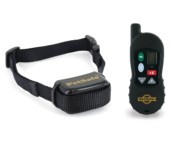I ran this article when we fist launched Deaf Dogs Rock so I know not many people had a chance to read this article so I am posting it again so more people who have deaf dogs or who are thinking of adopting a deaf dog can also read it. If you run across any deaf dog articles in the media and you would like us to share them with our readers please send me a link to christina@deafdogsrock.com and we will either share them here or on our DDR Facebook page. Thanks so much. ~ Christina Lee – Deaf Dogs Rock
Challenges and Rewards of Living With A Deaf Dog by Dana Standish
There’s a brief moment in Mike Nichols’ iconic 1967 movie, The Graduate, that helps me imagine what life is like for my 15-year-old Corgi, Edgar, who has lost most of his hearing. Early in the film, Benjamin Braddock, the eponymous graduate, enters a pool party given by his parents in his honor, wearing full SCUBA gear. Wellmeaning faces from his past float up in succession, each one with advice about what he should do with his life, but, while he can see their mouths moving and read their facial expressions, all he can hear inside the diving mask is the sound of his own breathing.
Every now and then, I look Edgar straight in the eye and say, as helpfully as I possibly can, “Plastics.” That is the advice given to Benjamin by the soonto- be-cuckolded Mr. Robinson about a possible career path. No one ever laughs at my jokes, so Edgar’s blank look is not new, but it makes me feel as though I am still communicating with him even though he cannot hear.
It might seem petty to worry about a little deafness when Edgar is in otherwise perfect health. But I realized that his deafness was a barrier to our bond, and that I felt as estranged from him as he undoubtedly did from me. He had never come when he was called, so that was nothing new. But suddenly he looked away when I said the various trigger words — “Let’s go for a walk,” “Do you want a treat?” “Do you want to ride in the car?” — that used to cause him to cock his head from side to side in a manner that made it clear we were communicating. Suddenly, he was silent during birthday parties, when in the past, his exuberant baritone rang out above all the other voices during the Happy Birthday song.
Dogs’ hearing mechanism is basically the same as that of humans, and they experience hearing loss for many of the same reasons: they can be congenitally deaf (deaf since birth), or they can acquire deafness due to having dirt, wax, ear mites or other foreign bodies in the ear; an infection or inflammation of the ear canal; trauma to the head; noise trauma; exposure to certain antibiotics or other drugs; or old age. I do not know when or why Edgar lost his hearing; part of it was undoubtedly just normal aging process. But he also had an ongoing skin infection that extended into his ears, which I treated with antibiotics, either of which can cause hearing loss. His hearing seemed to have deteriorated overnight, but most likely, it was a gradual process that I didn’t notice until he exhibited some of the more obvious symptoms: pacing around looking for his people, suffering obvious distress at being left alone, exhibiting a pronounced startle response at being touched while he was asleep.
“In hearing, as in most other things, dogs are very adaptive and good at compensating,” says Colette Williams of the University of California, Davis, Pritchard Veterinary Medical Teaching Hospital. Williams has been an electro- diagnostician at UCD for 29 years. Among many other tests that she conducts, she assesses animals for hearing loss using brainstem auditory evoked response (BAER) technology. Many seeking her expertise are breeders, who use BAER to identify congenital deafness in their puppies.
If a puppy is found to be bilaterally deaf (deaf in both ears), breeders have a difficult decision to make: euthanize that puppy or let it go as a pet. Those who favor euthanasia point out that many deaf dogs end up in shelters because of the challenges in training them. Also, deaf dogs often get hit by cars, and they can be snappy when they are startled when sleeping, which gives the breed a bad name.
Colette Williams has tested thousands of dogs and has owned two deaf dogs of her own. One of her dogs, a bilaterally deaf-from-birth Dalmatian, learned hand signals that Williams and her son made up. “The key was consistency, and rewarding him with treats,” she says. “I had a hearing dog at the time, and he was harder to train than the deaf dog.” Hearing dogs often aid a deaf dog, Williams points out. They give social cues and can help with training. Williams trained the hearing dog to wake the deaf dog so she didn’t have to worry about the deaf dog biting her young son if he touched the dog while he was sleeping.
Deaf dogs can be marvelously adaptable and inventive. “Dogs are good at using their other senses,” says Williams. “My deaf dog knew where every cat in the neighborhood was. When we walked, he would scan from side to side, taking in everything.”
Read the full article on The Bark by clicking here.
Tips for Living with a Deaf Dog
• Keep your deaf dog on a leash or in a fenced yard. Deaf dogs cannot hear cars and other hazards.
• Learn to communicate using hand signals. Essential signals are: sit, stay, come, down, good, no and watch. Also establish a signal for your dog’s name.
• Buy a tag for your dog’s collar that says: “Sparky is deaf. If found, please call …”
• Place a bell on your dog’s collar so you can find her.
• Be consistent in your communication.
• Let the dog know when you are leaving the house. Do not “disappear” when she is asleep.
• Wake a deaf dog by putting food under her nose, or by touching her away from her face. Teach children how to wake a deaf dog without startling her. Some dogs may bite if startled when they are sleeping.
Signs of Ear Problems
If your dog experiences the following, it could be a sign of deafness or another ear condition that should be evaluated by your veterinarian:
• Inattentiveness or change in obedience
• Inability or confusion when following familiar vocal commands
• Prolonged barking
• Difficulty waking up
• Repetitive head shaking or tilting toward side of affected ear
• Painful ears or smelly discharge from ears
• Change in personality
Resources
American Sign Language
Deaf Dog Education Action Fund (D.D.E.A.F.)
Deafness in Dogs and Cats
Diane Rich Dog Training
Living with a Deaf Dog: A Book of Advice, Facts and Experiences About Canine Deafness, by Susan Cope Becker
If you would like to subscribe to Bark Magazine click here.









